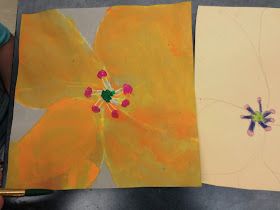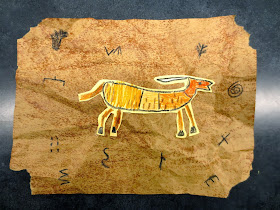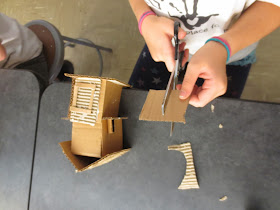Inspired by American artists Georgia O'Keeffe, second grade artists are creating their own version of a flower. First, we looked at many of O'Keeffe's paintings. Students practiced drawing flowers close up, then picked their best drawing to create into a painting. We discussed how to create intermediate colors by mixing a primary color with a secondary color, and created our own color wheels with the six intermediate colors. Students chose one intermediate color to mix for their large petals.
Check out the finished flower paintings on our online art museum at Artsonia!
http://www.artsonia.com/museum/gallery.asp?exhibit=733690






















































